If you want to know about objective of design or origin of architecture or what is building services in tall building, please click the link.
The sitting of a multistorey building refers to the process of selecting and preparing the site where the building will be constructed. It involves several important considerations to ensure the safety, stability, and functionality of the building.
1) Effects on the urban space

- The urban space , the space for social life of the people is influenced by the existence of tall buildings.
- Many experts emphasize on three main characteristics of the urban space, as follows:
- The space being confined.
- The aesthetic quality of the space.
- Social functions and activities being executed in that space.
i) The space being confined
- Space when used as a confined area should enjoy a quality that creates the most desirable visual effects for the users of the space.
- The urban space in areas where the tall buildings are the most prevalent type, the spaces do not enjoy such human atmosphere and the narrow streets between these buildings destroy possible perspectives from inner spaces towards open spaces.
- This obstruction in the sight creates more tightness in the space in case the building is taller.
- The undesirable circumstances will be intensified by the shadows being made, lack of sufficient lighting and lack of sunlight.
- For solving this problem, the following remedial measures are recommended:
- Making openings among buildings by establishing open or green spaces along the length of the tower blocks, in the streets,
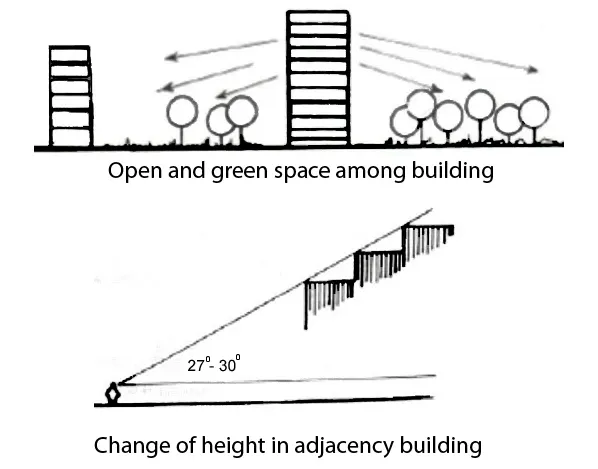
- Recession in some buildings by not making them too high
- Change of height towards its appropriation and adjacent tall and short buildings.
ii) The aesthetic quality of space

- Tall buildings have a nice perspective from relatively long distances.
- However, from closer destinations they are not much appreciated.
- In order to modify the aesthetic aspect of the urban space, ….when the tall buildings are the most prevalent types and to improve the physical and visual aspects of these spaces, the dimensional proportions should somehow be near to the human measures. i.e.
- In the other words, the heights of buildings in the main envelope should be reduced Because space is at an urban scale, this will help to appreciate the entire building at one go.

iii) Social functions & activities in space
- Social functions and activities in tall building are not successful, due to confinement and lack of sight
- Therefore, by recession of those buildings from the frontier envelope of urban space and construction of short buildings instead, the space would be more suitable and will enjoy the possibility of creating more and better visual perspectives.
- As such, the tall buildings are located further away from the space surrounding so that their undesirable influences on the urban space will diminish.
2) Visual effects of siting in tall building

- The towering height of the building results in clear widening of the site itself which would not gel in a setting where traditional housing would merge into the surrounding landscape.
- The effect of tall building from the distance is not only determined by their own position, but by the background, buildings or hills etc. They should be well appreciated from a distance.
- As the high rise cannot hide behind the trees or other neighboring structures it tends to attract more attention and so should be aesthetically more satisfying.

- Tall building should merge with the surrounding environment yet be a contrast to stand apart and be high.
3) Effects on the urban perspective

- Supporter of tall buildings believe that one of the major advantages of these buildings is provision of urban perspective and sight from inside higher storey’s of these buildings.
- But it should be remembered that the phenomenon of tall buildings has generally some undesirable impacts on the adjacent environment for example:
- Obstruction of view, shadowing, reducing the privacy of interior space by the adjacent buildings and influencing the green areas.
- These high rise buildings form a part of the urban environment so it is very important to study their sitting with respect to the conditions of the given site and its surrounding as well.
- If the same is not done it may result in chaos in that region posing problem to the users of that building and in that neighborhood.
- So the various factors in this regard are discussed as follows.

4) Fitting in an urban space

- It becomes mandatory for an architect to plan its orientation streamlined with the over all planning of that area. Doing this will support other factors like traffic flow , services and infrastructure.
- These building form a part of a built environment so it is important to see that they do not pose hazards for the low lying constructions in that area.
- It should also be ensured that these building abide by the bye-laws in that area.
5) Relationship to existing urban environment
- The high rise building should be designed such a way that it does not hinder to the existing urban environment and its importance.
- EXAMPLE: LIC BUILDING AT CANNAGHT PLACE.
- The building stands itself in the rush areas, at one side, janpath and other side the palika market.
- Both the places are market place and LIC building is an office building.
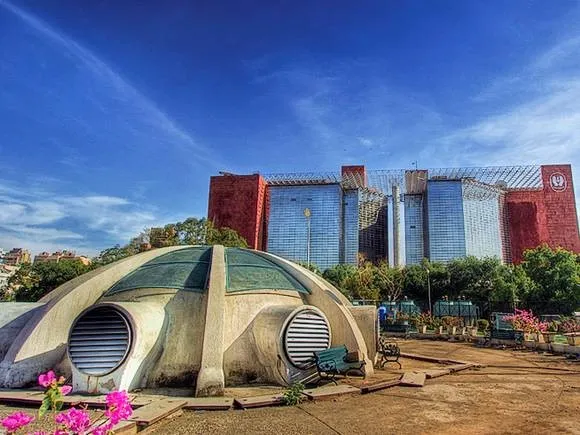
6) Position with regard to traffic, size, function & its accessibility
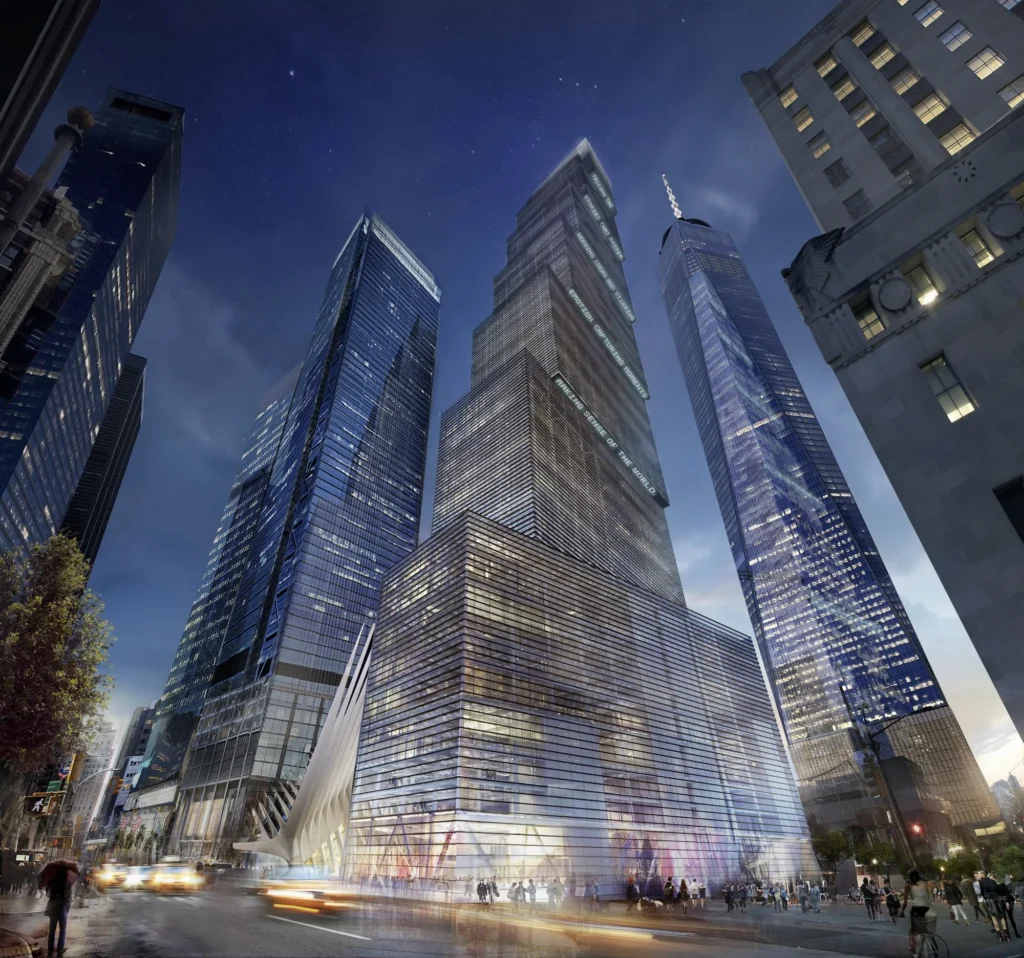
- The size of the high rise building should be such that it does not create “ canyon effect “.
- The volume should not obstruct the incoming solar radiation to the areas behind it.
- The appropriate size of the building will depend on the location of the proposed site.
The size of the building may be disguised by ;
a) Steeping back an upper floor
b) Utilizing the roof space
- Before installing the type of building can be decided by the need of function of area.
EXAMPLE:-
- If slum is to be demolished the high rise residential building will solve the problem of slum and also the area is utilized.
- The accessibility of the building ; It should be located such a way that it gives easy accessibility to all its users.
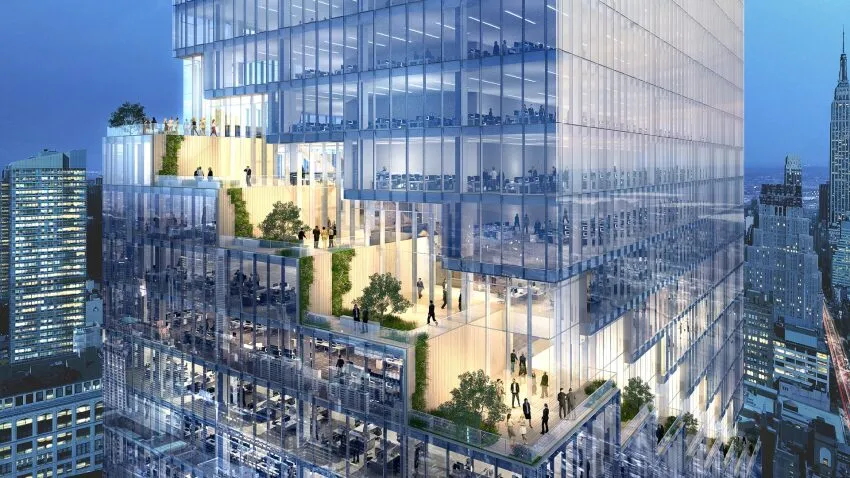
7) Condition such as traffic, security, subsoil, water level etc.
- The high rise building will need a good service system according to its height , so the services like water supply , sanitation , energy. Should be accommodated according to its capacity.
EXAMPLE:-
- Sewage pipes should be provided the high rise building or STP. should be provided at the site.
- The security for fire escapes and other hazards should be accommodated to the building.
- Fire lift, fire exists and fire lanes should be there in the site for the security problems.
- The flow of air and the wind directions should be checked.
- The building should be arranged such that air flow to the whole city is not obstructed.
8) Feasibility W.R.T. bearing capacity of soil
- Bearing capacity of soil effects the depth & type of foundations to be used, methods employed for construction etc.
- It is cheaper to design wide shallow foundations to a uniform & predetermined depth, than to excavate narrow foundations to a depth which might be variable on site.
- Differential settlements should be taken care of, as per the bearing capacity of soil.
- Ground water control is the key to success of ground & foundation works and its effects must be considered, both during and after construction. Dealing with water within a site may reduce water-table of surrounding areas and effect adjoining structures.
- Foundations in fine-grained soils (such as clay, silt & chalk) need to be taken down to a depth below by which they will not be affected by seasonal changes in moisture content of the soil, frost action & action of the roots of trees.
9) Some crucial factors
i) Air traffic
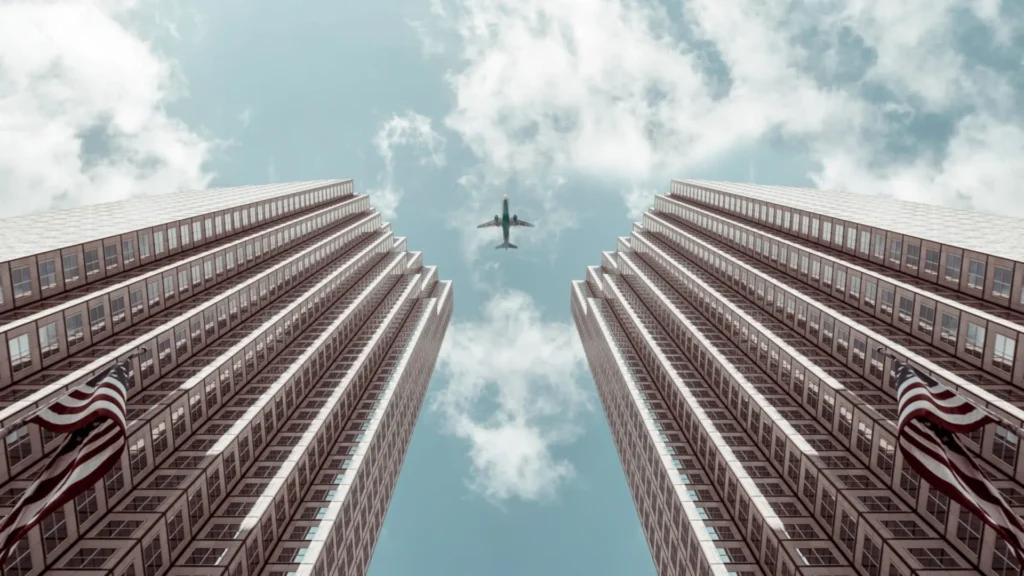
- Negligence of this factor leads to encroachment of air traffic and high-rise buildings into the spaces of each other.
- Proper clearances must be obtained from the aviation departments and height restrictions must be clearly followed.
ii) Security
- Security information on a regional scale is crucial factor in deciding the location of a facility in a potential target area.
- The following are the factors of concern from safety’s perspective;
- access to food, water, fuel, & other needs.
- control of approach & escape routes to & from a location affected by a disaster/attack.
- security must be balanced against such matters as access to transport, availability of utilities, convenience to occupants and visitors, and symbolic significance in the society.
- degree of ease for law enforcement, emergency fire & rescue-services to approach the site.
iii) Subsoil water level
- This governs following factors;
- where on site to locate the building
- type & size of foundations suitable for the structure
- This affects the bearing capacity of soil as some soils are prone to expansion & contraction with changes in moisture of soil.
- A very high-water table leads to extra costs by making construction more difficult and because of the need for pumping, etc.
- High rise water table implies high water pressure on soil. This correspondingly makes the soil weaker.
10) Environmental conditions
- These shall be discussed at two levels ie.
Inside the building
- Their should be facility for open spaces that add to the conducive environment for the users.
- There should be no closed or dark spaces as they may result in problems like:
- Claustrophobia – (Fear of Closed Spaces)
- Acrophobia – (fear of heights)
- Achluophobia – (Fear of Darkness)
- Facilities such as security bell, fire safety alarms, etc. should be provided.
Outside the building
- There should be guards to ensure that nobody enters or leaves the building unknowingly.
- It should be well lit to ensure safety at night.
- All the above points should be taken care while working upon a multistory building to ensure that it is well sited.
Overall, the sitting of a multistorey building is a complex process that requires careful evaluation of many different factors to ensure a safe, functional, and sustainable building.